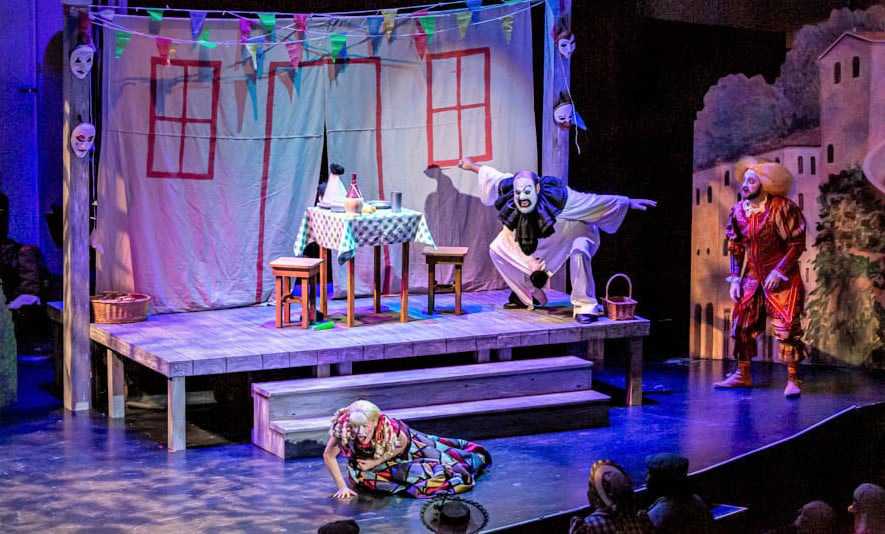Chauvet lights ‘compelling’ Pagliacci
- Details

Keith Arsenault reflected this dichotomy in vivid fashion recently when lighting the St. Petersburg Opera’s production of the Leoncavallo opera. With help from a collection of Chauvet Professional Rogue fixtures, he used bold and subtle changes in colour and brightness to reflect the spiral of events that gives Pagliacci its compelling power.
“Although a ‘one act opera’, Pagliacci is very specifically divided in two scenes,” said Arsenault. “One is set in a bright, sunny Italian day; the other takes place while night is falling. The story gets darker and darker dramatically. As that second scene descends into homicidal madness, the colour palette shifts into a more and more unnatural look.
“At this point, the intensities lower and the follow spots take over,” continued Arsenault. “I also have no issue with having those backlight washes slowly move from the platform stage where the Commedia takes place to the tragedy centre stage. This occurs slowly and steadily, so I doubt anyone actually notices the move, but it works for me dramatically.”
Arsenault deployed 11 Rogue R2 Wash fixtures spread out over three battens: five on the downstage first electric; and three each on the second and third positions. Also in the rig were three Rogue R2X Spot units, which were on the first electric.
The St Petersburg Opera production of Pagliacci took place at The Palladium, a structure that was built originally as an 1920s Romanesque style church. “This building poses a number of interesting challenges for both scenic and lighting designers,” said Arsenault. “Christopher Spatafora is the production manager / technical director for The Palladium and his work makes my work so much easier.
“From my perspective as a lighting designer, the principal front of house lighting position is at a steeper angle than what would be ideal - and conversely what could be considered Balcony Box positions are a bit on the low side,” he continued. “So, it’s a constant battle to balance the audience’s focus where it’s needed. I am fortunate that the follow spot configuration in this venue is well placed and levels and timings are controllable from the console.”
Given the configuration of the theatre and its wide, but shallow stage, there are very limited opportunities for “traditional” opera scenic production, with major scene shifts between acts. Consequently, the production must rely to a great extent on unit sets that either get redressed or slightly modified as the opera progresses without massive wholesale changes.
“At this venue, it is up to the lighting designer to make a significant difference between locations and time of day,” said Arsenault. “This is true for all of the work we do there.”
















